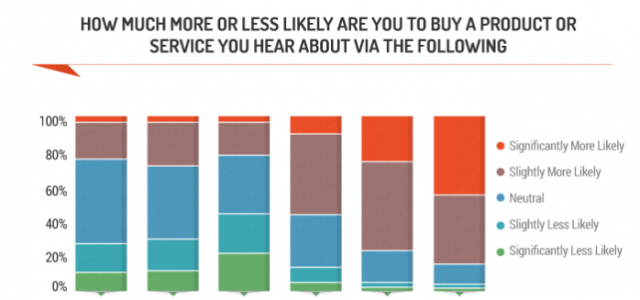I have a confession. I am naturally incapable of scaling-up my business. That’s quite a revelation, and a relief to say it out loud. How about you? Regardless of whether you work in a corporate or a start-up, have you discovered whether you have a natural slant towards starting-up or scaling-up?
Background
We have been privy to assess teams, from a conative perspective over the past two years working with teams across many different industries, sizes, genders, ages etc. The data we collected from hundreds of people showed a trend in the teams. When we looked at the CEOs there are two very distinct and prominent types of leader: The Scale-Up Leader and The Start-Up Leader.
Scale-Up Leader (Data First)
The Entrepreneur is the traditional CEO that we’ve noticed teams are expecting to run their company. We found that the Scale-Up Leader will always take a measured risk– they are able to deal with and manage unknown risks and alongside this risk-taking, they are always measuring data and results as they progress forwards. This measurement is key to their success, but it creates an expectation to the wider team that they must also be data-driven and report-back with results.
These Scale-Up Leaders tend to be seen as a safe pair of hands and reassure both the team, board, investors etc that steady growth will occur. They are in their element when the initial business model has been proven and have to scale-up something that people need or want.
The leader I tend to envisage for this role is Bill Gates.*
Start-Up Leader (Data Later)
The Start-Up Leader also known as The Pioneer naturally manages risk and they are often comfortable with a slightly higher degree of risk than the traditional entrepreneur. The main difference is that rather than measure data and results first, they tend to take risks, build solutions and then assess results and keep building based on the results. One of the main drivers for the Start-Up Leader is to build something that’s intangible, and they are especially driven if people tell them that whatever they are building is impossible.
During the time of “build” where the results are unknown, these leaders tend to be seen as erratic and changing direction as often as the Keystone Cops. But when they succeed they are seen as incredible innovators.
The leader I tend to envisage for this role is Steve Jobs.*
* Both examples I use are business who demonstrated obvious start-up and scale-up success.
Personality
Note that with both leadership profiles, their personalities can be either outgoing or reserved – the key is how they are naturally skilled – which will determine how they run their business.
In Action – Start-Up Leader
We were working with a very successful CEO who had scaled-up her company and decided to employ some more senior leadership in her team. Due to the profile and success of the company she had hired big-hitter CxOs from industry-leading firms. We found that the new team hadn’t bought into her style of leadership and she was suffering from slight imposter syndrome.
When we looked deeper, we realised that this CEO is a natural Start-Up Leader, she was and is incredibly creative which is why she’d started a brand new unique concept and was also very hands-on. But the new senior managers were expecting her to behave in a more measured way – as this was the sort of person/profile they were used to reporting to – a Scale-Up Leader.
At the time of the initial meeting, the senior management team were suggesting that the CEO needed to go for business coaching. (I see this as “conditioning” – you don’t behave how we expect, so we want you to change)
So we assessed the entire management team’s natural skills and we looked at how they will run projects and lead. This provided a common language and some data to allow open discussions, without making the conversations personal.
Once the CEO learnt about her natural skills, it allowed her to drop any intention of changing and to be her natural self as a Start-Up Leader. During our discussions, we highlighted these differences in expectations of each other and over a relatively short period of time the new management accepted her as she is and this allowed them to work better together.
Whilst it is good to get a positive result it is better that we have the psychometric data of all the staff to backup and validate our findings. Almost a year later, the data still stands true and the CEO and I have become drinking buddies (even if I’ve recently given up alcohol, how positively-millennial of me).
In Action – Scale-Up Leader
We often assess teams as part of an acquisition or investment. It’s a sensitive time and the investors usually want to keep the leadership in place, as it can cause a drag on the deal (delays in regards to growth). Nonetheless, sometimes one or more key leaders are replaced and the teams can see it very negatively at first, but with a neutral hat on – we often see the reason why this staff change has occurred.
Two companies we’ve recently worked with have had to replace the leadership. The founders were Start-Up Leaders, who are naturally good at developing the unknown but the investors (and founders) could see that going forward new Scale-Up Leaders would be required. The reasoning given by the investors was that the founders didn’t have the previous experience of scaling-up – and were looking forward to exit.
Whilst prior experience is important, we know from psychometric assessment, that future growth requires people who won’t continuously change lanes and will naturally measure data – because this fuels systemisation (which is a whole different skill and subject to write about).
We regularly point this out to both the investors and any staff we interview through assessment, as it helps to show that through a change of leaders to a Scale-Up Leader or CEO the investor is usually building more security. The founders are happy as beyond the acquisition, they realise they would not be able to take so many risks, build or pivot – they have done their job to prove the business model.
Note also, that there are a number of investors who see the requirement to change and offer coaching to the incumbent CEO to help them adapt to Scale-Up which is also possible and needs to be managed so not to cause burn-out.
What about you?
Today there are so many choices about our leadership careers. We can work in companies of all sizes all with very different styles. Often we see people who have worked both in corporate and start-up roles in the past and are now finding it difficult to choose between the two.
In this case, the key isn’t to look at the environment, but to look inside ourselves– what are we naturally good at? Then we can use that information to assess the most suitable roles. Because, if we align our work to what we are naturally good at, it is more likely we will be in flow2and often very satisfied.
I mentioned at the start that I cannot scale-up, as I am a definite Start-Up Leader. So, officially I am personally incapable of scaling-up but with the right business partners in place, which I have, who are naturally Scale-Up Leaders – we can achieve the goal together.
Article by channel:
Everything you need to know about Digital Transformation
The best articles, news and events direct to your inbox
Read more articles tagged: Featured, Leadership








